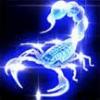Latest vmount version will dislay the disk number "behind" a volume (NEW).
If need be, i could also add the partition number.
Hopefully I did not introduce any nasty bugs as this is monday (back to work) and it has been a while I did not put my fingers on vmount 
vmount-win64 volumes
#;VolumeGuid;Drive;VolName;FS;Size;Disk
0;\\?\Volume{e26e7b15-122a-11e7-82bf-806e6f6e6963}\;;[R'serv' au systSme];NTFS;349MB;0
1;\\?\Volume{876ebd81-ce10-11e8-8334-94de80c2a41e}\;E:\;[DATA];NTFS;152624MB;1
2;\\?\Volume{c91f3411-92db-11ea-835b-001a7dda7113}\;G:\;[];NTFS;510MB;2
3;\\?\Volume{e26e7b16-122a-11e7-82bf-806e6f6e6963}\;C:\;[SYSTEME];NTFS;114126MB;0
4;\\?\Volume{c3ccf19b-9cbc-11e8-8325-806e6f6e6963}\;D:\;;;;;
To sum it up, we have the volume options (above) where we have the volume guid, the logical driver letter and the disk number (and possibly the partition number if one asks gently).
From a disk number, you can jump to a partition or device, and from there (based on the drive letter), you can jump to a volume using FOR /F "tokens=* USEBACKQ" %%F IN ...
Next to volumes, where you can get pretty much everything in one go (guid, letter, disk number...), we also have the disks, partitions and devices options.
Volumes can be filtered on guid field (NEW).
Disks can be filtered on the productid field.
Partitions is filtered on the device field.
Devices is filtered on the drive field.
vmount-win64 disks
DiskNr;SN;ProductId;Size;Type;Removable
0;[01020304];WDC_WDS120G2G0A-00JH30;114480MB;SATA;NON-REMOVABLE
1;[56B682DC];Hitachi_HDP725016GLA380;152627MB;SATA;NON-REMOVABLE
2;[D1842729];Virtual_Disk;512MB;UNKNOWN;NON-REMOVABLE
vmount-win64 partitions
Drive;VolName;FS;Device;Size
C:;[SYSTEME];NTFS;\device\harddisk0\partition2;114126MB
E:;[DATA];NTFS;\device\harddisk1\partition1;152625MB
G:;[];NTFS;\device\harddisk2\partition1;511MB
R:;[RAMDRIVE];NTFS;\device\imdisk0;1024MB
vmount-win64 devices
Device;Drive;size
\device\harddisk2\partition1;G:;511MB;
\device\harddisk0\partition1;;350MB;
\device\harddisk0\partition2;C:;114126MB;
\device\harddisk1\partition1;E:;152625MB;





















